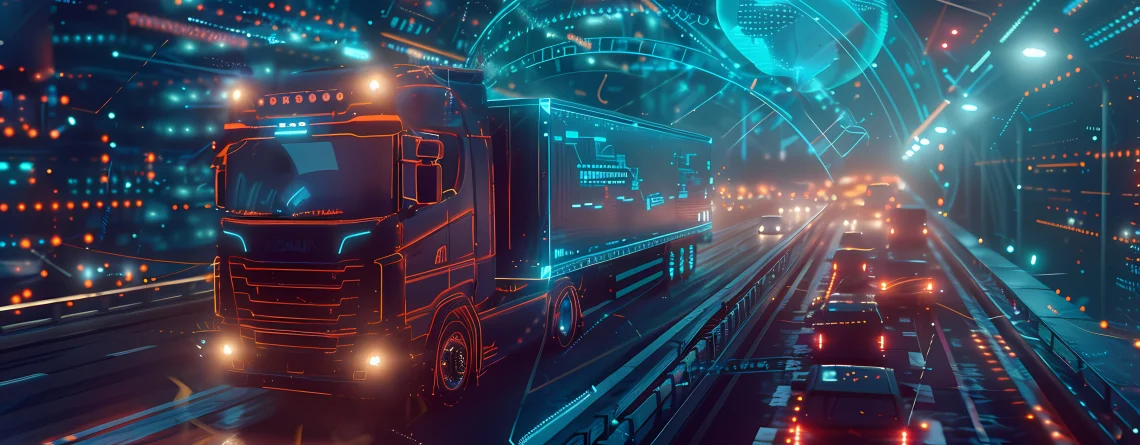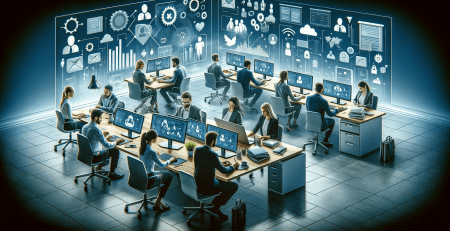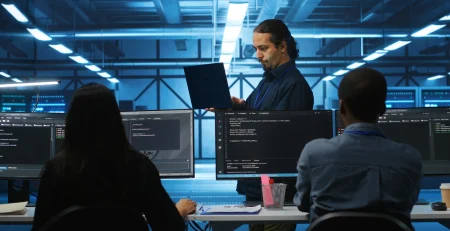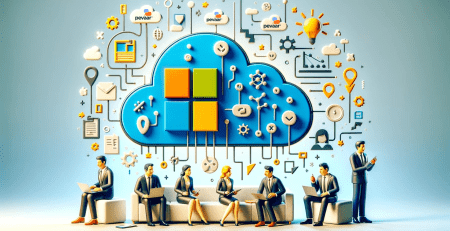Revolutionize Transportation with Nearshore Software Development
Transportation has transformed from simple horse-drawn carriages to high-speed trains, electric cars, and even autonomous vehicles. But behind the scenes of this incredible evolution lies a critical component: software development. It’s not just hardware that drives modern transportation; it’s the sophisticated software that makes these innovations possible. In this article, we’ll explore how Nearshore Software Development and Nearshore IT are revolutionizing transportation and shaping the future of mobility.
Table of Contents:
- The Intersection of Transportation and Technology.
- Understanding Nearshore Software Development in Transportation.
- Benefits of Nearshore Software Development in Transportation.
- Case Studies: Nearshore Software Development Transforming Transportation
- The Role of Nearshore IT in Transportation Software Development.
- Challenges in Implementing Nearshore Software Development in Transportation.
- Future Trends in Nearshore Software Development for Transportation.
- Conclusion.
- FAQs.
The Intersection of Transportation and Technology
The transportation industry has seen a dramatic shift from traditional methods to digital, technology-driven solutions. Gone are the days when transportation relied solely on physical infrastructure. Today, it’s about the seamless integration of technology that makes transportation faster, safer, and more efficient.
Consider the technological advancements like GPS navigation, electric vehicles, and ride-sharing platforms. These innovations aren’t just about convenience—they’re about transforming the way we move. And at the core of these advancements is software development, enabling everything from route optimization to real-time traffic monitoring. Here, Nearshore Software Development plays a vital role in bringing these technologies to life.
Understanding Nearshore Software Development in Transportation
So, what exactly is Nearshore Software Development, and why is it so crucial for transportation? At its core, software development is the process of designing, coding, testing, and maintaining software applications. In transportation, these applications can range from traffic management systems to autonomous vehicle software.
Nearshore IT plays a significant role in this development. By outsourcing software development to nearby countries, companies can benefit from cost savings, cultural similarities, and time zone alignment, all while maintaining high-quality standards.
Benefits of Nearshore Software Development in Transportation
Nearshore Software Development brings a multitude of benefits to the transportation industry. Here are a few key advantages:
- Improved Efficiency and Productivity: Software solutions like automated scheduling, predictive maintenance, and real-time tracking systems streamline operations, reducing delays and improving overall efficiency.
- Enhanced Safety and Security: Advanced software systems monitor vehicle conditions, track driver behavior, and predict potential hazards, making transportation safer for everyone involved.
- Cost-Effectiveness and Scalability: Nearshore Software Development allows for scalable solutions that grow with the company’s needs, reducing the need for expensive hardware upgrades.
- Real-Time Data and Analytics: Transportation software collects and analyzes vast amounts of data, providing insights that help in decision-making and optimizing routes, reducing fuel consumption, and improving customer satisfaction.
Case Studies: Nearshore Software Development Transforming Transportation
To truly understand the impact of Nearshore Software Development, let’s look at some real-world examples:
- Autonomous Vehicles: Self-driving cars are one of the most significant advancements in transportation. The software behind these vehicles includes complex algorithms for navigation, obstacle detection, and decision-making, all of which are crucial for safe and efficient autonomous driving, often developed through Nearshore IT partnerships.
- Smart Cities and Intelligent Transportation Systems: Cities around the world are integrating smart technologies into their transportation systems. These include smart traffic lights, public transportation tracking apps, and dynamic toll pricing—all made possible through sophisticated Nearshore Software Development.
- Mobility-as-a-Service (MaaS) Platforms: MaaS platforms integrate various modes of transportation into a single accessible service. Whether it’s a bus, bike, or ride-share, users can plan, book, and pay for their journey through one platform, thanks to comprehensive Nearshore IT solutions.
The Role of Nearshore IT in Transportation Software Development
Nearshore IT is a strategy where companies outsource software development to nearby countries, typically within the same or similar time zones. This approach offers several benefits, particularly for transportation companies looking to develop or enhance their software systems:
- Cost-Effective Solutions: Nearshore IT provides high-quality services at a lower cost compared to in-house development or offshore outsourcing. This is particularly beneficial for transportation companies operating on tight budgets.
- Cultural and Language Compatibility: Working with nearshore teams often means fewer cultural and language barriers, leading to smoother collaboration and better alignment with business goals.
- Faster Turnaround Times: Proximity in time zones ensures that communication is more efficient, and projects can be completed faster without the delays that can occur with offshore teams.
Many transportation companies have successfully leveraged Nearshore IT to enhance their software capabilities. For example, a European transportation firm partnered with a nearshore IT company to develop an advanced fleet management system, resulting in improved logistics and reduced operational costs.
Challenges in Implementing Nearshore Software Development in Transportation
While Nearshore Software Development offers numerous benefits, it also presents challenges, particularly in the transportation sector:
- Security and Privacy Concerns: With the rise of connected vehicles and smart transportation systems, cybersecurity has become a significant concern. Ensuring that software systems are secure from cyber-attacks is critical to maintaining safety and trust.
- Integration with Existing Infrastructure: Many transportation companies operate on legacy systems that are difficult to integrate with modern software solutions. This can lead to costly upgrades and potential disruptions during the transition.
- Regulatory and Compliance Issues: The transportation industry is heavily regulated, and software solutions must comply with various local, national, and international laws. Navigating these regulations can be complex and time-consuming.
Future Trends in Nearshore Software Development for Transportation
The future of transportation is exciting, with several trends poised to transform the industry further:
- The Growth of AI and Machine Learning: AI and machine learning are set to play a more prominent role in transportation, from improving traffic predictions to enabling fully autonomous vehicles, often developed through Nearshore IT collaborations.
- The Potential of Blockchain Technology: Blockchain could revolutionize how we track and manage transportation data, ensuring transparency and reducing fraud in logistics and supply chains.
- The Impact of 5G on Transportation Software: The rollout of 5G networks will enable faster, more reliable communication between vehicles and infrastructure, paving the way for more advanced transportation systems, facilitated by Nearshore Software Development.
Conclusion
Nearshore Software Development is at the heart of the modern transportation revolution. It’s transforming how we move, making transportation more efficient, safer, and more accessible. Nearshore IT plays a vital role in this evolution, providing transportation companies with the tools and expertise needed to stay ahead in a competitive landscape. As technology continues to advance, the intersection of transportation and Nearshore Software Development will only grow stronger, leading to a future where mobility is smarter, faster, and more connected than ever before.
FAQs
- What is the role of Nearshore Software Development in modern transportation?
Nearshore Software Development is crucial in creating and maintaining the systems that power modern transportation, from autonomous vehicles to real-time traffic management.
- How does Nearshore IT benefit transportation software development?
Nearshore IT offers cost-effective, culturally compatible, and efficient solutions for transportation companies looking to develop or enhance their software systems. - What are the challenges of integrating Nearshore Software Development into transportation systems?
Challenges include security and privacy concerns, integration with existing infrastructure, and navigating regulatory and compliance issues. - What future trends should we expect in Nearshore Software Development for transportation?
Future trends include the growth of AI and machine learning, the potential of blockchain technology, and the impact of 5G on transportation software. - How does Software Development improve transportation safety?
Advanced software systems monitor vehicle conditions, track driver behavior, and predict potential hazards, making transportation safer for everyone involved.
For companies looking to stay ahead in the rapidly evolving transportation industry, Pevaar is the ideal partner in Nearshore Software Development. With expertise in custom IT solutions, AI-driven automation, and real-time data integration, Pevaar helps businesses develop cutting-edge transportation software that enhances efficiency, safety, and scalability. Whether you need advanced fleet management systems, intelligent traffic solutions, or mobility-as-a-service platforms, Pevaar’s skilled nearshore IT teams provide high-quality, cost-effective solutions tailored to your needs.












Leave a Reply